Description
The range of contrast you can achieve in charcoal is unrivalled, and there is no limit to the kinds of marks you can make. There are strengths and body to charcoal that will never be present in pencil, which as a medium is inherently more grey and weaker in tone.
Charcoal drawings stand on their own as an independent artistic genre but the medium is also used in a supporting role to establish the under-drawing for oil or acrylic paintings.
I was trained by the extremely talented Elizabeth Gunter at Stellenbosch University on the medium of charcoal.
I am sure you know that at Uni (University) nobody gets spoon-fed or receives step-by-step directions. Instead, you get tossed into the deep end and once you wash ashore you pray that the art gods take pity on you and grade your work with a pass.
Needless to say, I have had many late nights with 10 x A0 charcoal sketches due on Friday morning. Through trial and error and way too much coffee in my bloodstream, I slowly figured out all the tricky bits of charcoal.
Quality charcoal and materials are vital for excellent sketches. Below is my list of the usual suspects when I approach my sketches.
Willow Charcoal / Vine Charcoal / Raw Charcoal
These are often referred to as ‘vine charcoal’ and are usually made from charred twigs of willow wood. ‘Vine charcoal’ comes in various thicknesses and densities, hard, medium and soft, which offer the artist a range of dark tones. It is a brittle medium that produces a dark velvety line that smudges easily, making it ideal for shading techniques.
These are great for sketching out and adding the first layer of mid-tones to your drawing.
Charcoal Sticks
Though you may not recognize it most of us are familiar with compressed charcoal. Charcoal pencils are made up of the stuff. All compressed charcoal is charcoal ground into a powder then a binding agent is added to it to harden it. The advantage to compressed charcoal is in using different amounts of binder we can create harder and softer charcoal sticks, allowing for flexibility with the material.
They come in Extra Soft, Soft, Medium and Hard.
Compressed Charcoal
They are available in the form of round or square sticks which come in light, medium and dark tones. The darkest crayons are soft and smudgy as they contain more charcoal pigment and less binder, making them more suitable for bold, expressive drawing. The lightest ones, which contain less charcoal, are harder and better for drawing cleaner and sharper lines.
Paper
Smooth surfaces, like hot-pressed paper or Bristol board, will showcase highly detailed line work. These are not ideal for charcoal drawing because the powdery, crumbly charcoal does not have anywhere to cling on such a slick, textureless surface. However, I prefer this when I am doing a super realistic charcoal sketch.
Rough and heavily textured paper, including pastel boards, will pull off the pigment of your drawing instrument and are much better suited to charcoal.
Smooth drawing papers allow you to erase fairly easily, but the surface may bear the marks of removal.
Other papers to consider:
- Newsprint. Newsprint is affordable and comes in a variety of sizes. However, it is fairly thin, so it can tear, pinch and buckle under strong pressure. This is ideal for gesture drawings and quick sketches. Newsprint has bad archival qualities so it’s not made for the masterpiece you are planning.
- It’s made from cotton fibres. This is often the go-to paper for charcoal drawing and other dry media. It can be purchased in individual sheets and pads or spiral bindings.
- It has a tooth. The surface texture is also described as the tooth–or how the surface holds the medium–whether it is graphite, charcoal or pastel. The softer your medium, the more tooth you want. Smooth paper is great for graphite, but it doesn’t hold charcoal or pastel as well as drawing paper with a rougher texture.
- It’s called charcoal or pastel paper. It will have the texture you want. Canson Mi-Teintes, Canson Ingres, Strathmore 500 Series and Fabriano Tiziano are popular choices.
- It’s 60-90 lb. Suitable paper for charcoal drawing and other dry media are typically in this range. Heavier paper can stand up to vigorous mark-making and erasing, which are both hallmarks of charcoal drawing.
Erasers
Rubber Eraser – Your standard eraser for erasing graphite. This eraser uses friction to remove any material from the surface.
Kneaded Eraser – This eraser lifts material from the surface, instead of using friction to remove it. It can be pulled and fashioned into different forms to create specific marks. This eraser gets dirty over time but can be cleaned by pulling and “kneading” it.
Electrical Eraser – a.k.a the ultimate eraser. This is by far my favourite thing in my art box.
Blending Stumps / Tortillian
The blending stump is a paper stump designed to move the charcoal around on the paper. They are great for adding hair textures and flow to a drawing.
Powdered Charcoal
This stuff is seriously messy, but a great way to cover large areas that need to be dark. I apply it with a brush or cotton working in a circular motion if I want to cover an entire background. It takes about 3 layers if you need a dark, dark background.
Fixative
Charcoal and chalk fixatives are quick-drying, colourless glues that you spray onto your work to prevent it from smudging. These are available as aerosols or as a bottle of liquid that you can spray with a mouth atomizer. You should be aware that fixatives are toxic and should only be used in a well-ventilated area, preferably outside and not in a classroom with other students around.
A more economical and less hazardous alternative to fixative is hairspray. Use the cheapest (firm hold) supermarket brand you can buy as they do not contain the natural and synthetic oils that will discolour your work.
Do not spray the fixative too close to your drawing as it may splatter and stain your image. It is best to spray from several feet away, building up the protection with several light coats rather than one heavy one.




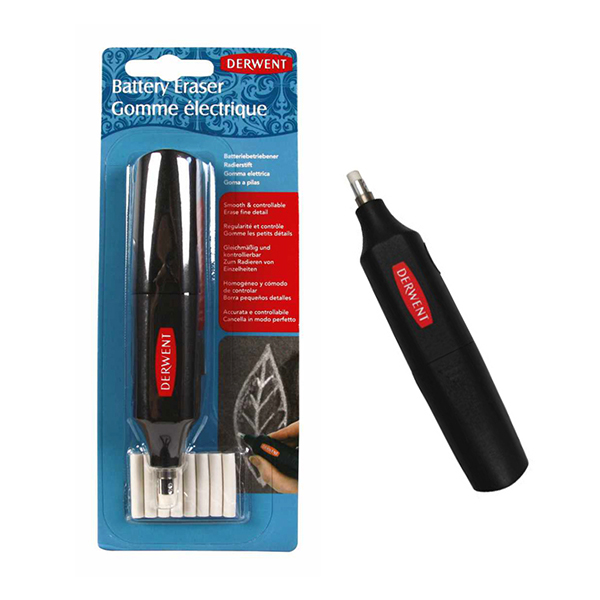
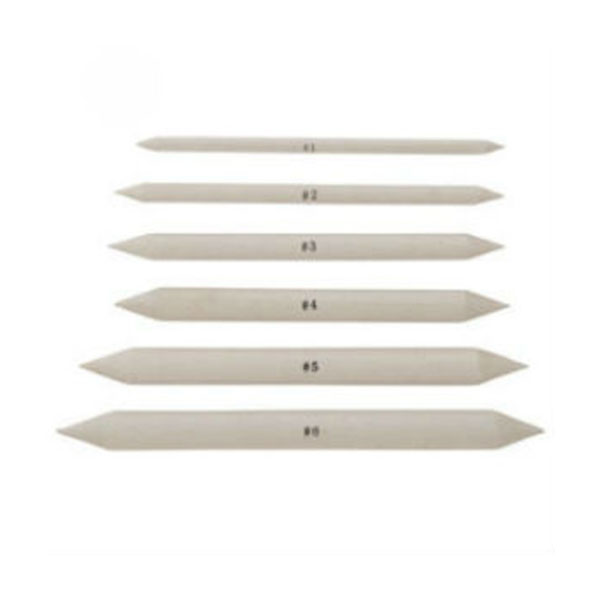

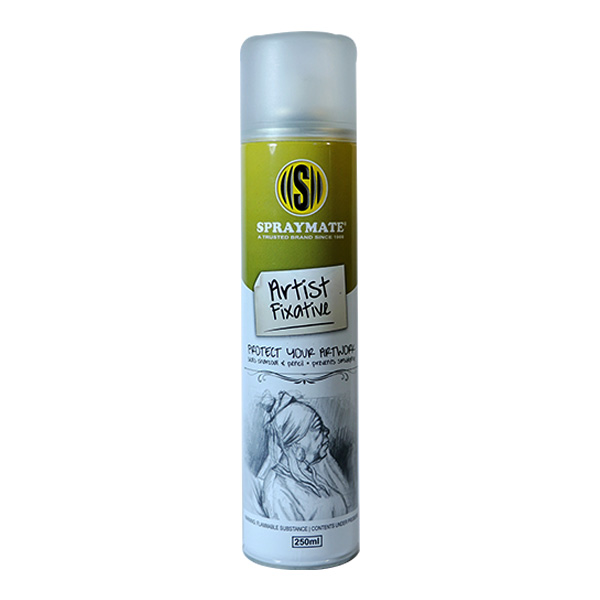
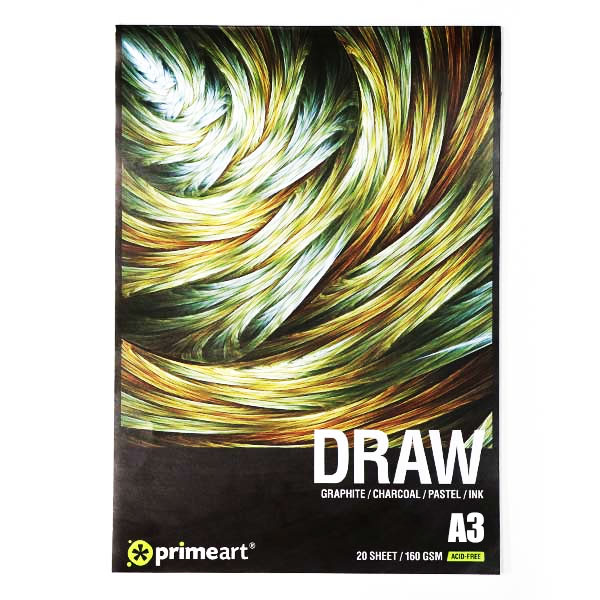

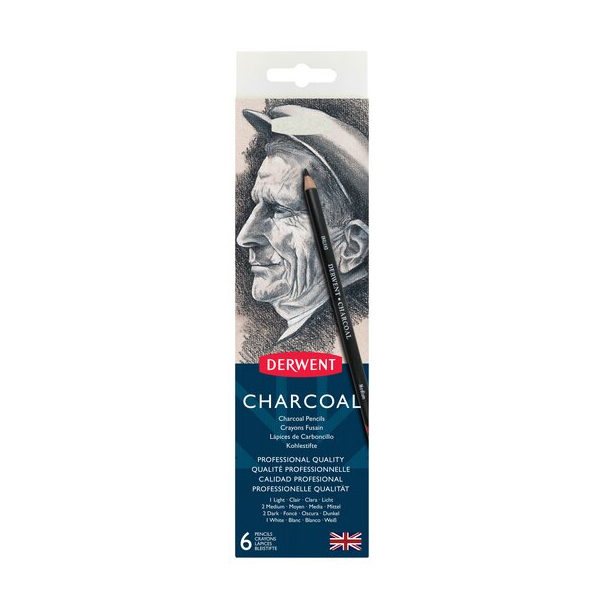
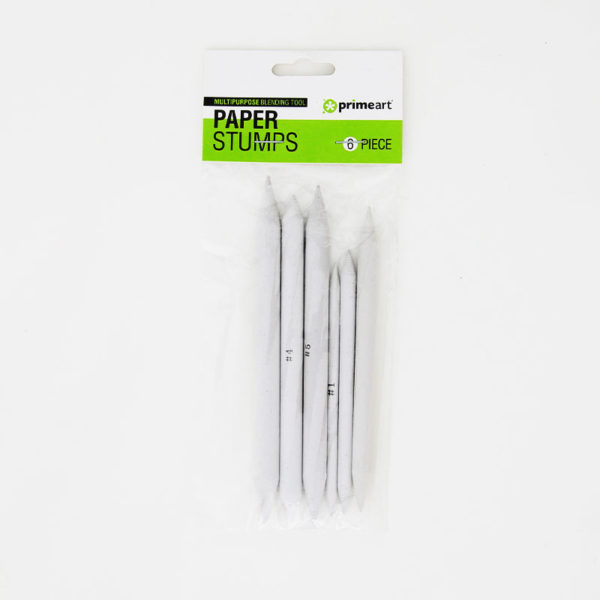
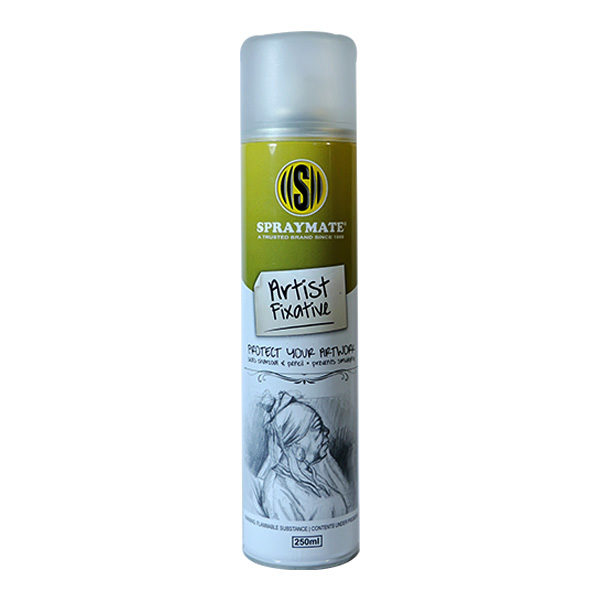
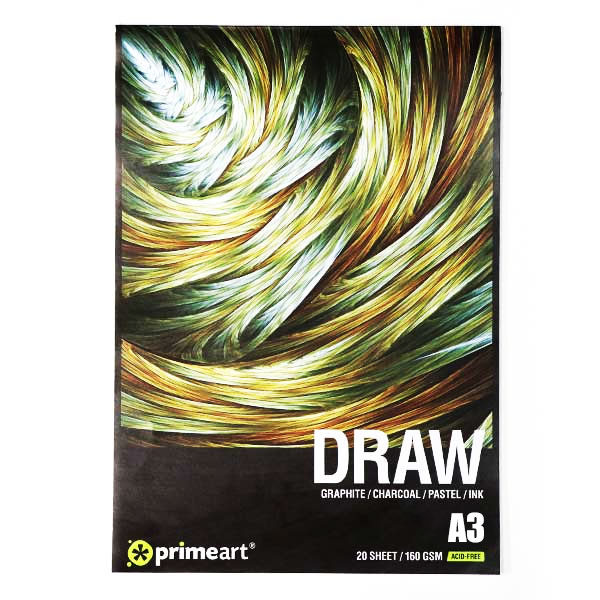

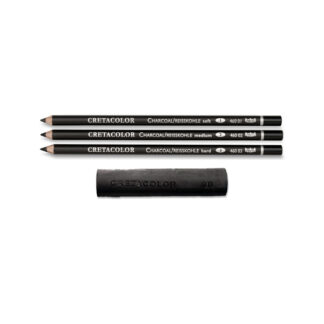



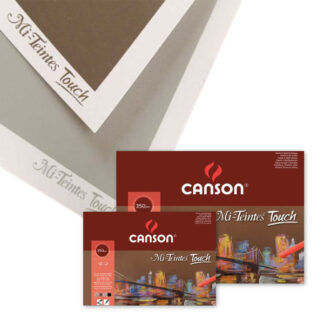


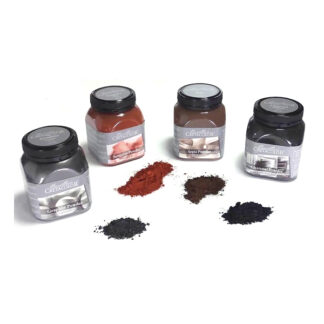
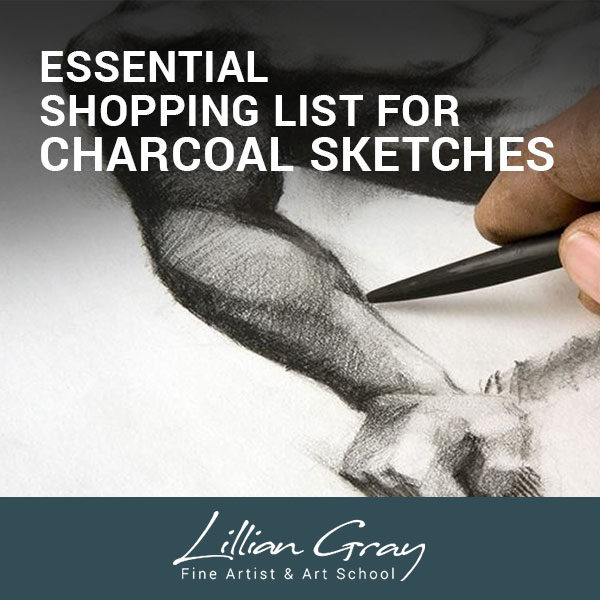
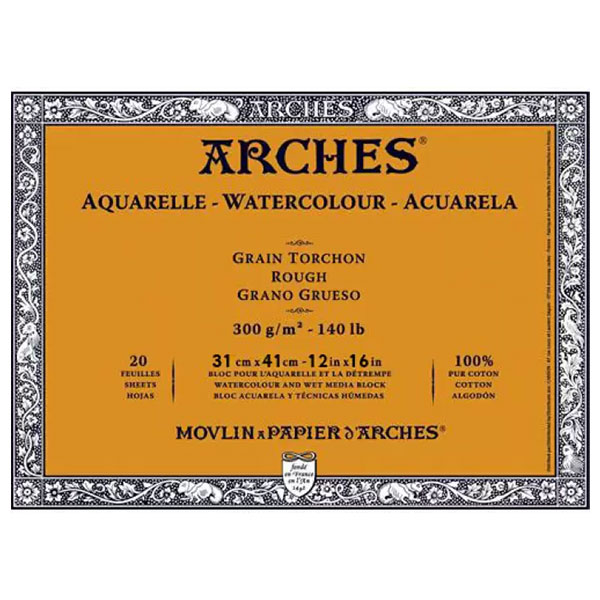
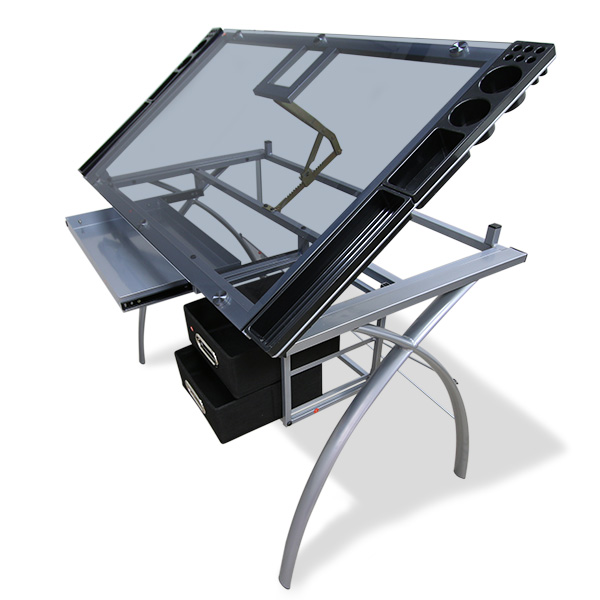

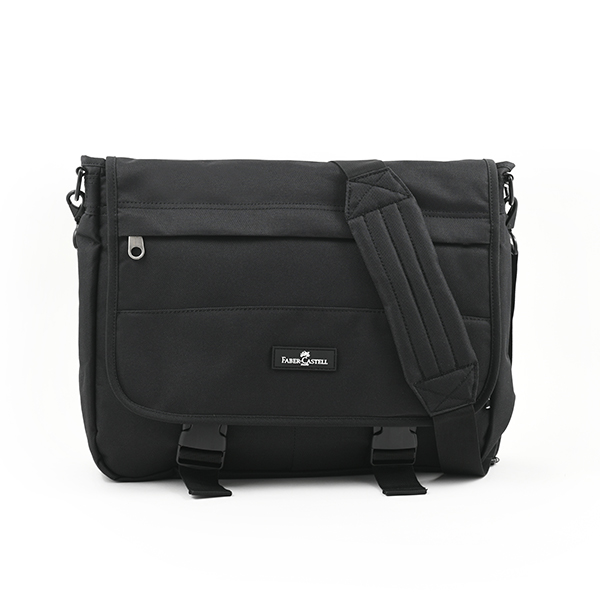

Reviews
There are no reviews yet.